This is the 28th post in a series of Nikon D850 tests. The series starts here.
In the preceding two posts, I looked at the on-axis sharpness and longitudinal chromatic aberration (LoCA) of the Sigma 135 mm f/1.8 ART and 105 mm f/2.8 macro lenses on the Nikon D850. Now I’ll do the same test with the Sigma 85 mm f/1.4 ART lens.
The target is a backlit razor blade:
The test protocol:
- ISO 64
- Focus shift, silent shutter option
- 40 steps
- Target distance, 1.5 meters
- Minimum step size (1)
- Aperture exposure mode
- Wescott LED panels set to 5500 K.
- Gitzo legs
- Arca Swiss C1 head
- Vinyl tile flooring over 6 inches of concrete on grade
- Fast Raw Viewer to discard the really out of focus images
- dcraw in document mode to get raw planes
- MTF Mapper to compute MTF50
- Matlab to automate the above
- Excel to graphs the results
Here are the results wide open:
The vertical axis is MTF50, measured in cycles per picture height (cy/ph). The shot taken with the lens focused to the closest position is on the left. There are 11 exposures plotted. There is no way to know the focused distance for these exposures. I used the minimum step size for the Focus Shift Shooting feature, which is too large to reliably catch the actual peaks, but it’s not that bad.
For comparison, here are the results with the same target and a somewhat different protocol (it’s a manual focus lens) for the Otus 85 mm f/1.4, also wide open;
The Otus has far less longitudinal chromatic aberration (LoCA), as indicated by the tight grouping of the peaks of the MTF50 curves, but the green channel of the Sigma is actually sharper. I’ll put that down to the slightly higher resolution of the D850 vis-a-vis the a7RII.
Stopping down helps sharpness a lot, but not LoCA.
One more stop:
That green channel sharpness is darned impressive, and f/2.8 is the sharpest stop for that channel. The LoCA is less impressive.
At f/4, all the channels are very sharp.
At f/5.6, the depth of field (DOF) is starting to cover up the LoCA.
At f/8 you’re not going to see the LoCA; the DOF will mask it.
This is a solid performance.
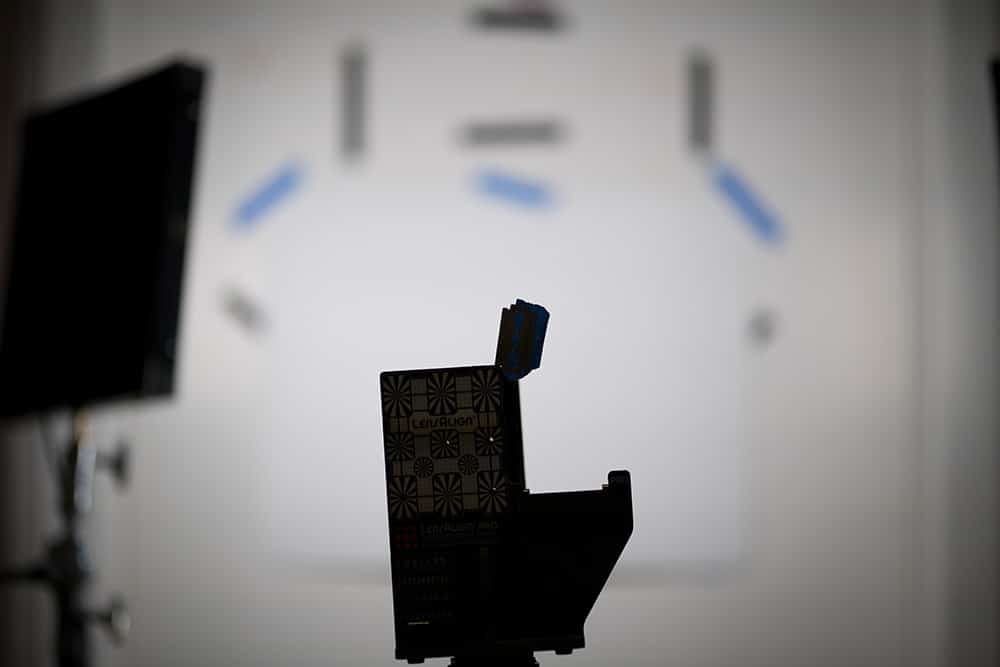
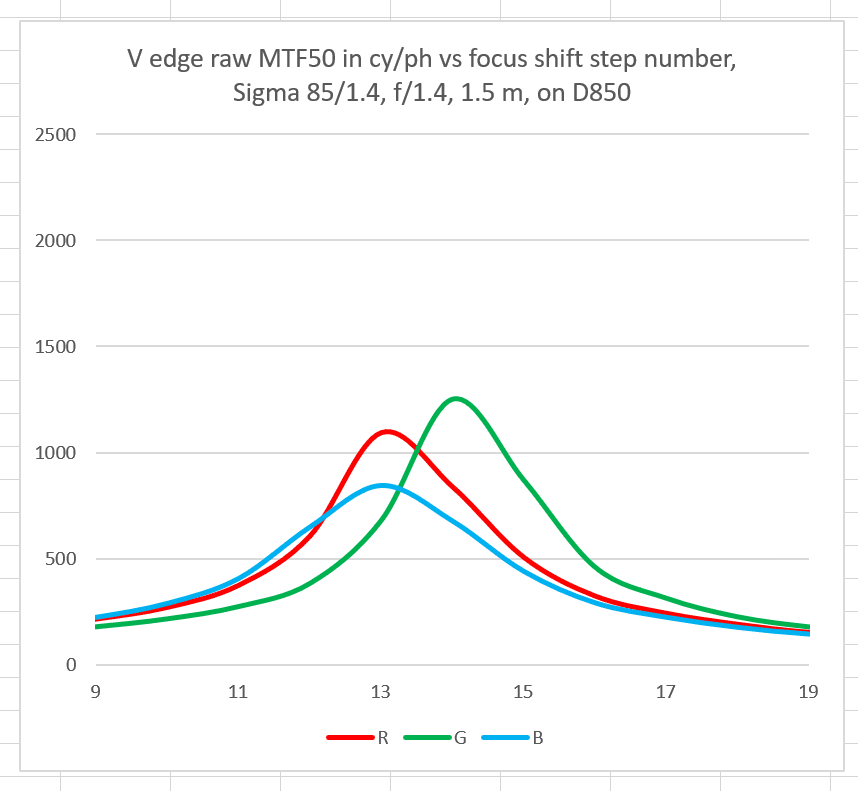
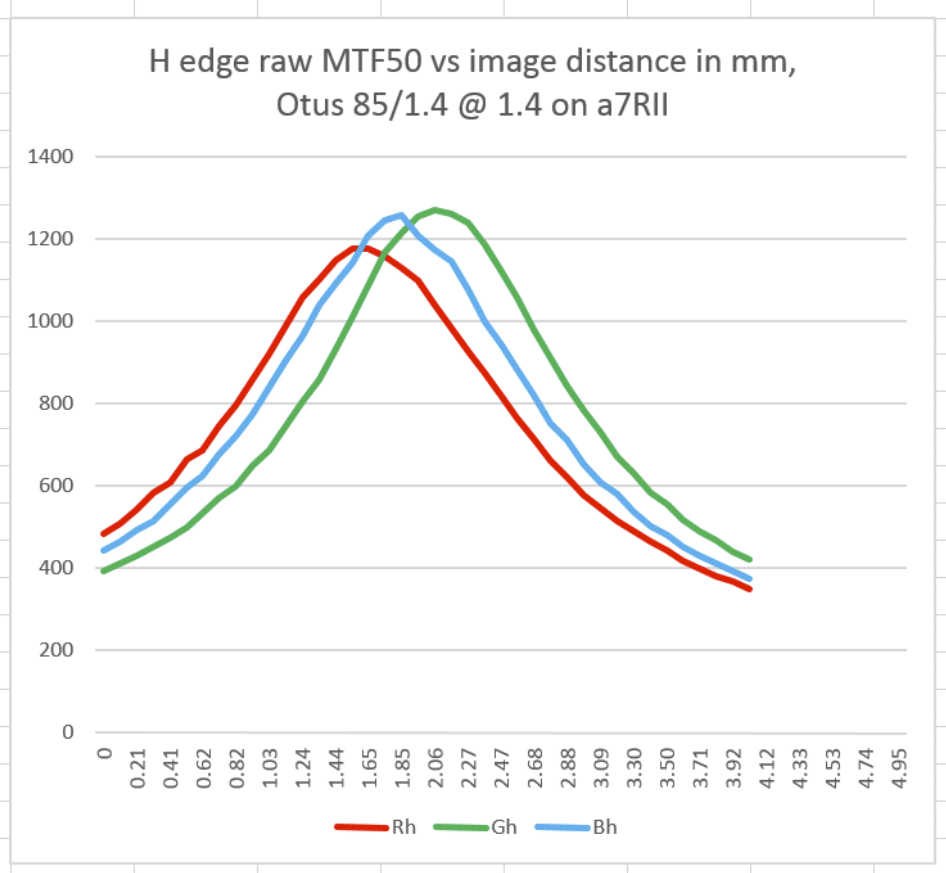
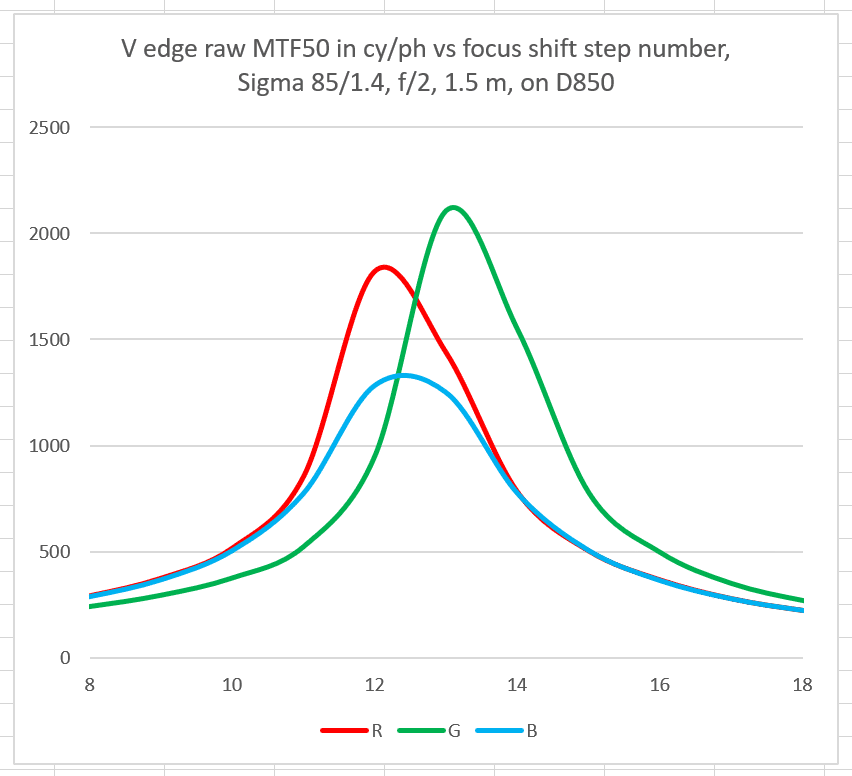
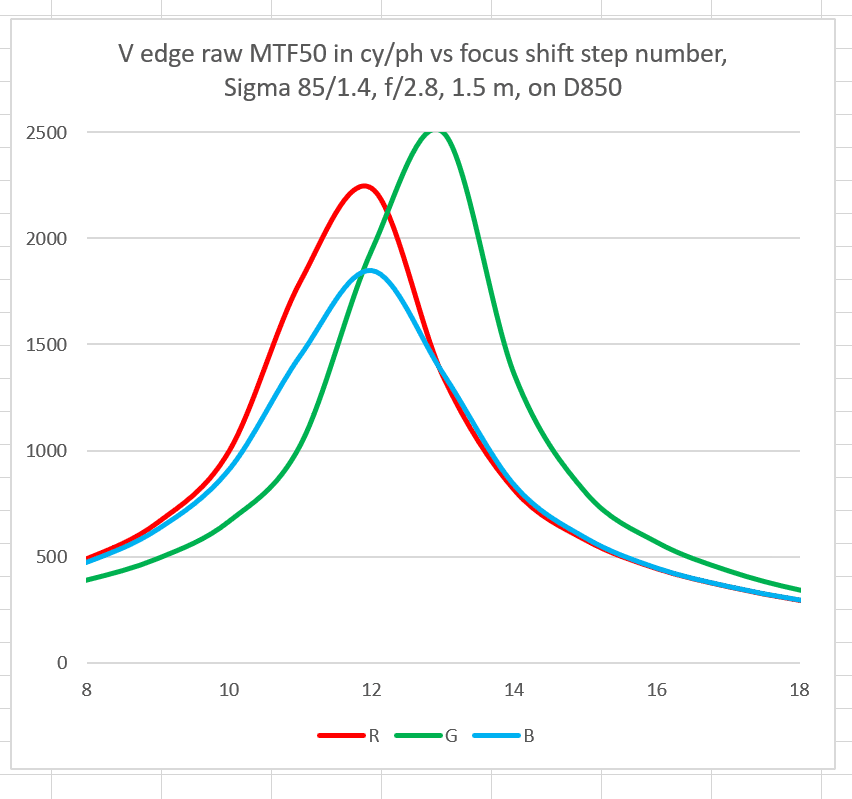
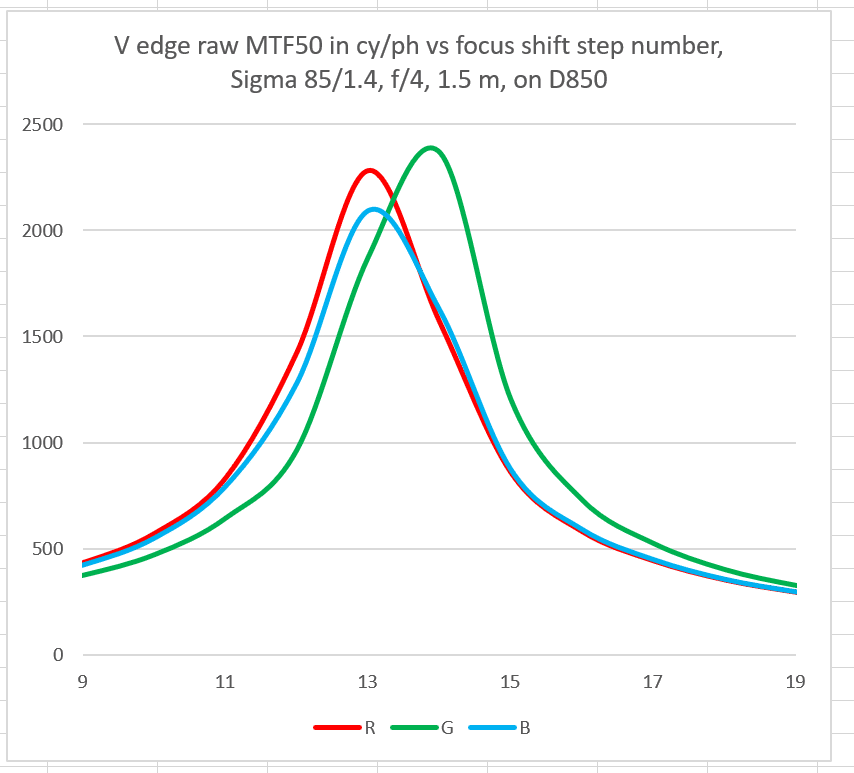
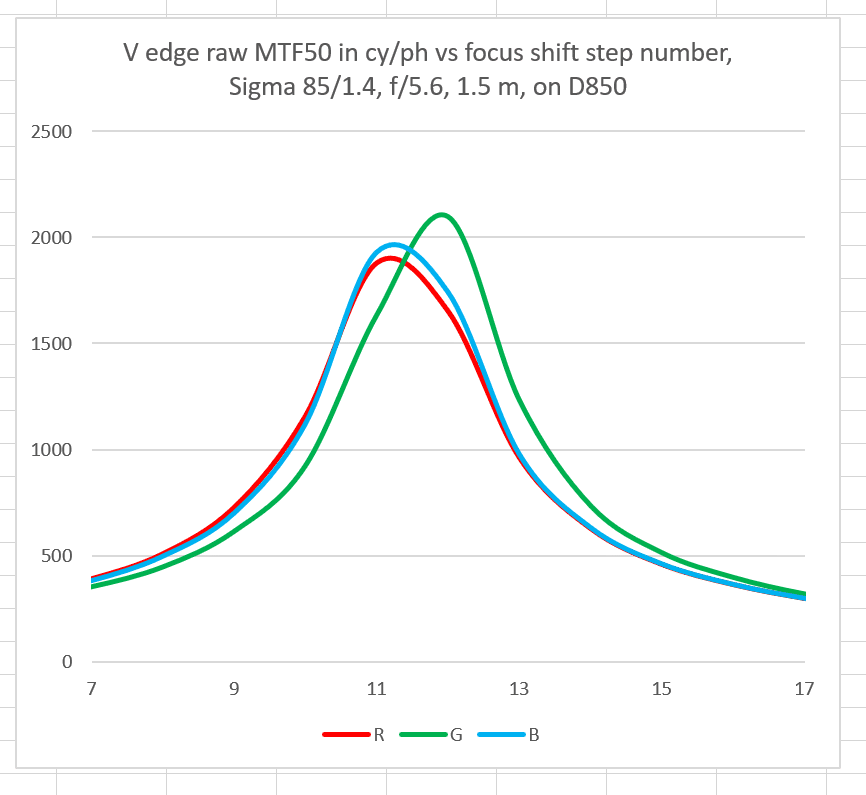
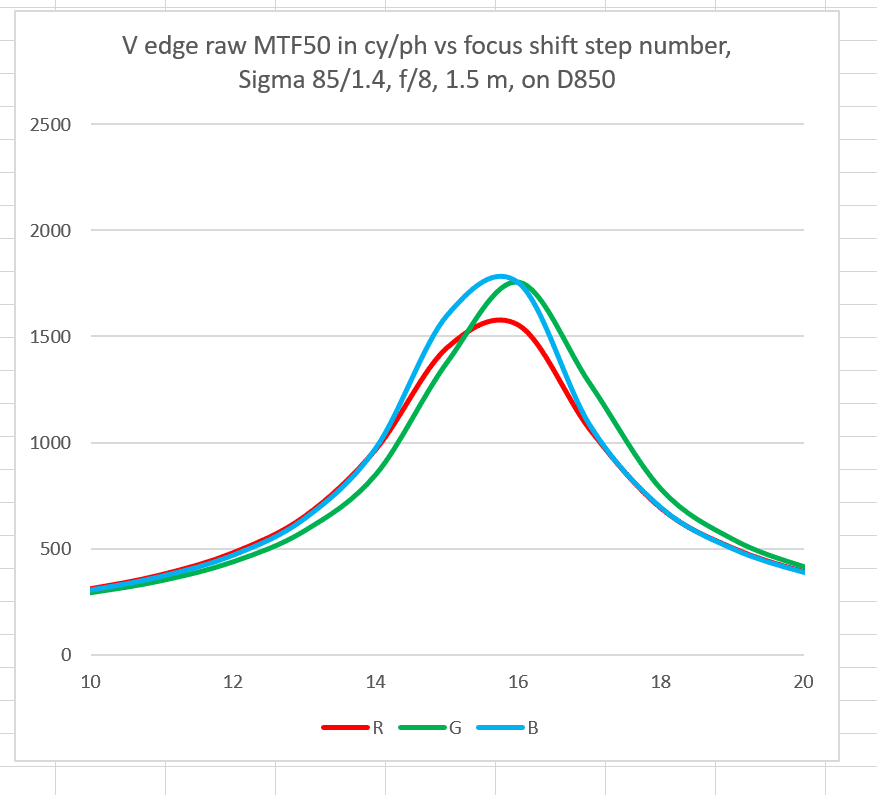
Jim,
I know that you need the razor to be close enough to be able to get a suitable size ROI so am left wondering what is the distance between the razor and the sensor ?
The reason I ask is that Zeiss publishes duplicate MTFs for f 1.4 and f4 and that the close focus charts have lower MTFs than the infinity focus versions.
Arthur
The distances are marked on the plots and stated in the protocols for each test. For the 85 mm Sigma, the distance was 1.5 meters.